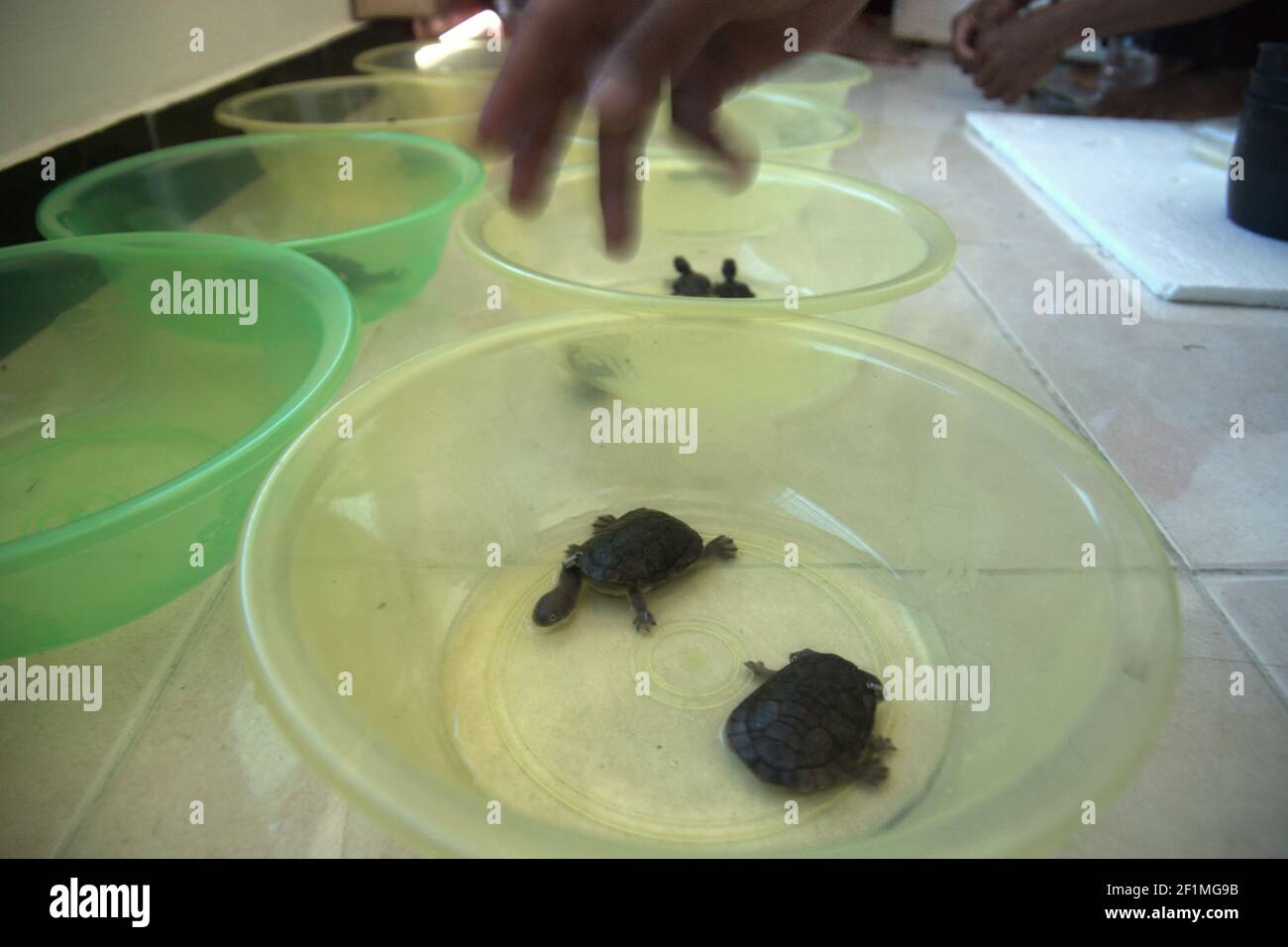Rote Island, Indonesia. July 15, 2009. Worker of a company that is an official breeder of Rote Island's snake-necked turtles (Chelodina mccordi) placing the endemic turtles into plastic bowls for conditioning phase. Bred in captivity, the turtles will be released to the wild, to one of the suitable habitats which is Lake Peto in Maubesi village, on a ceremonial event that will be attended by Indonesian officials on July 16, 2009. Indonesian officials, official breeders, and NGOs conduct the release program as one of the conservation efforts to save the critically endangered species.

Image details
Contributor:
REY Pictures / Alamy Stock PhotoImage ID:
2F1MG9BFile size:
27.5 MB (622.2 KB Compressed download)Releases:
Model - no | Property - noDo I need a release?Dimensions:
3800 x 2533 px | 32.2 x 21.4 cm | 12.7 x 8.4 inches | 300dpiDate taken:
15 July 2009Location:
Batu Termanu, Rote Ndao, East Nusa Tenggara, IndonesiaMore information:
This image could have imperfections as it’s either historical or reportage.
Ten years later, in 2019, the government of East Nusa Tenggara province declared the establishment of Rote Island's Wetland Essential Ecosystem Area (KEE) as the habitat for the Rote Island snake-necked turtle (Chelodina mccordi) that threatened by wildlife trade. Consists of three lakes in Rote Ndao (Peto, Lendoen and Ledulu), the KEE is seen by Turtle Survival Alliance as "an extremely important milestone for protecting the habitat of Chelodina mccordi." "It helps to ensure that this species will once again have a place to live freely in nature, ” said Cris Hagen, Director of Animal Management, Turtle Survival Alliance.